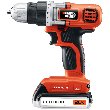Installing Wide-Plank Flooring
Written by Lee Wyatt (last updated March 14, 2018)
Wide-plank flooring is different from other kinds of wood flooring in one major way, the planks are simply wider. On average, a wide-plank floor has planks in it that are at least five inches wide. One of the results of this style of flooring is a wonderful "country" look that can add a wonderful comfortable feel to your home. Installing wide-plank flooring is also a great choice if you are looking for an easier installation job itself. Simply follow these directions, and you will find that you have your new wide-plank floor ready to enjoy. Be sure that you set aside plenty of time for this project though, since it can take up to 16 hours for a novice to complete.
Materials:
- Wide-plank flooring
- Cut nails
- Circular saw
- Stud finder
- Hammer
- Quick square
- Drill (optional)
- Counterbore bit (optional)
- Wooden dowel plugs (optional)
- Wood glue (optional)
- Chalk line
Procedure:
- Mark the subfloor. Unlike other kinds of wood flooring, you really need to know where the floor joists are when installing wide-plank flooring. The reason for this is that the wider boards will expand and contract depending on the moisture in the room and the seasons. This means that they will need to be nailed to the floor joists. This shouldn't be a problem with most plywood subfloors though, since they have a nailing pattern printed on them. Simply follow this pattern to find the floor joists. If you don't have this type of subflooring, then use a stud finder to locate a joist. Typically, the center of each joist is located 16 inches away from one another. Once you find your first joist, measure off and mark the next one using a chalk line to help ensure a straight line.
- Measure and cut the planks. Measure the length of your floor, and then begin to cut the planks to fit those dimensions. Double check and make sure that your measurements are accurate before you actually begin cutting the boards though, so that you can avoid wasting any material.
- Begin nailing the boards. Lay your first board down, and then begin to nail the board to the subflooring. Make sure that when you nail the planks down, you are nailing where the floor joists are located. Use cut nails, which have square heads, to nail the planks down. These cut nails will help provide an "older" look to your flooring, and won't split the wood if you are careful. Simply make sure that the nails are oriented so that the long side of the nail is facing the long side of the board, and that the nails are at least 3/4 inch away from the edge. Repeat until you have completed the floor.
- Use pegging for an alternative look. If you do not like the look of the nails, you can also try "pegging" your floor. Do this by screwing in some screws to hold the planks down. Make sure that you are using a counterbore bit to help make your guide holes, so that you can sink the screws in deep enough. Once you have screwed in all the planks, apply a little glue to each hole and add a dowel plug. This will give your floor the look of having been "pegged."
Author Bio
Lee Wyatt
Contributor of numerous Tips.Net articles, Lee Wyatt is quickly becoming a regular "Jack of all trades." He is currently an independent contractor specializing in writing and editing. Contact him today for all of your writing and editing needs! Click here to contact. Learn more about Lee...
Roof Contractors
Whether it is from a sudden storm, or your home has experienced a growth spurt there will come a time when you need to ...
Discover More
Making Goals a Reality
One of the best ways to become more organized in life is to make goals. However, just because you make some goals doesn't ...
Discover More
Using a Window Squeegee
Just about everyone in the world would like to have a nice clean window, and frankly there are as many ways to do this as ...
Discover More
More Home Improvement Tips
Protecting Tile Floors
One of the most popular choices in home flooring is tile floors. When used properly, tile floors can greatly enhance the ...
Discover More
Repairing a Broken Step
Over time, just about everything in the home will break down or need to be repaired in some way. This can also include ...
Discover More
Replacing Damaged Sections of Carpeting
When replacing damaged sections of carpeting, you'll need a carpet remnant or leftover of the carpet you're replacing. If ...
Discover More

Comments